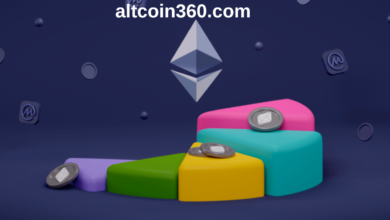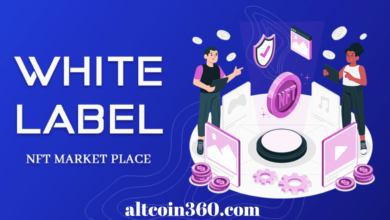NFT Platform Development: Unleashing the Power of Digital Ownership

NFT Platform Development
In recent years, the world of digital art, collectibles, NFT Platform Development and intellectual property ownership has been revolutionized by Non-Fungible Tokens (NFTs). NFTs are unique digital assets that represent ownership of a particular item, artwork, or collectible on the blockchain. These tokens have gained immense popularity, enabling creators to monetize their digital content and collectors to own exclusive digital assets.
The development of NFT platforms has become a hot topic in the tech industry, with countless entrepreneurs and businesses looking to capitalize on this innovative technology. In this article, we’ll explore the intricacies of NFT platform development, covering everything from the fundamentals to the advanced features that can make your platform stand out.
1. Understanding NFTs
Before delving into NFT platform development, it’s crucial to have a solid understanding of what NFTs are and how they work. NFTs are a type of cryptocurrency, often built on blockchain networks like Ethereum, Binance Smart Chain, and Flow. They differ from traditional cryptocurrencies, such as Bitcoin and Ethereum, because they represent ownership of unique digital assets rather than fungible tokens with equal value.
Each NFT is associated with a specific digital or physical item, whether it’s digital art, music, virtual real estate, virtual items in games, or even physical goods. What sets NFTs apart is their scarcity, indivisibility, and immutability. They are secured using blockchain technology, making them tamper-proof and traceable. This guarantees the authenticity and provenance of the digital assets they represent.
2. NFT Platform Development: Step by Step
NFT platform development involves a series of essential steps. Let’s break down the process.
a. Define Your Vision and Goals
The first step in NFT platform development is to clearly define your vision and goals. Ask yourself questions like:
– What kind of digital assets do you want to tokenize?
– What is the primary purpose of your platform (e.g., art, collectibles, music, virtual items)?
– Who is your target audience, and what problem are you solving for them?
– How will your platform differentiate itself from the competition?
Having a clear vision and well-defined goals will guide your entire development process.
b. Choose the Blockchain
Selecting the right blockchain is one of the most critical decisions in NFT platform development. Ethereum, with its popular ERC-721 and ERC-1155 standards, is a popular choice. Other blockchains like Binance Smart Chain, Flow, and Tezos have also entered the NFT space. Each blockchain has its own advantages and limitations, so consider factors like scalability, security, and user base.
c. Smart Contract Development
NFTs are created and managed through smart contracts. You’ll need to develop or customize a smart contract that complies with the NFT standard on your chosen blockchain. These smart contracts define the properties of the NFTs, including their uniqueness, ownership, and transferability.
d. Token Minting
The token minting process involves creating NFTs by adding metadata and attributes to your smart contract. This information includes details about the digital asset, such as its title, creator, and a link to the asset’s file. Minting NFTs can be a one-time process or ongoing, depending on your platform’s requirements.
e. User Wallet Integration
To buy, sell, and manage NFTs, users will need a cryptocurrency wallet compatible with the blockchain you’ve chosen. Integrate wallet options into your platform to allow users to securely store and interact with their NFTs.
f. Marketplace Development
Most NFT platforms include a marketplace where users can browse, buy, and sell NFTs. This marketplace should be user-friendly, with features like search and filtering options, auction functionality, and a clear user interface. Additionally, you’ll need to integrate payment gateways to facilitate NFT transactions.
g. Metadata Storage
NFTs store metadata on the blockchain or off-chain. While the blockchain ensures NFT ownership, the metadata can be hosted on decentralized or centralized servers. Deciding where and how to store metadata is crucial for platform performance and scalability.
h. Scalability and Security
Scalability is a key challenge for NFT platforms, especially during periods of high demand. To address this, consider the blockchain’s scalability and implement off-chain or layer-2 solutions to alleviate network congestion. Security is equally important to protect user assets and data.
i. Community and Social Features
Engage your community by integrating social features like user profiles, comments, likes, and shares. This fosters a sense of community and encourages users to interact with the platform.
j. Marketing and Promotion
Creating a successful NFT platform involves marketing and promotion. Leverage social media, partnerships, and influencers to increase visibility and attract users and creators.
k. Continuous Improvement
The NFT space is constantly evolving, so be prepared to adapt and improve your platform. Gather feedback from users and creators and continuously update your platform to meet their needs.
3. Advanced Features for Your NFT Platform
To stand out in the competitive NFT market, consider incorporating advanced features into your platform. Here are some ideas:
a. Fractional Ownership: Allow users to purchase fractions of NFTs, making high-value assets accessible to a broader audience.
b. Dynamic Royalties: Implement smart contracts that automatically distribute royalties to creators and previous owners every time an NFT is resold.
c. Provenance Tracking: Offer a transparent history of NFT ownership, ensuring the authenticity of assets.
d. Gamification: Integrate gamification elements to engage users, such as earning badges or rewards for completing specific actions on the platform.
e. AR/VR Integration: Explore augmented reality (AR) and virtual reality (VR) features to enhance the NFT experience for users.
f. Interoperability: Allow NFTs to be used across different applications or platforms, increasing their utility.
g. AI-Powered Curation: Implement AI algorithms to curate and recommend NFTs to users based on their preferences and behavior.
h. Cross-Chain Compatibility: Enable the transfer of NFTs between different blockchains, broadening their potential reach.
i. Social Tokens: Create social tokens tied to influencers or content creators, allowing fans to invest in their favorite personalities.
j. Environmental Considerations: Address concerns about the environmental impact of NFTs by choosing eco-friendly blockchains or adopting energy-efficient protocols.
Conclusion
NFT platform development represents a remarkable opportunity to tap into the burgeoning world of digital ownership and creativity. Whether you’re a startup looking to disrupt the market or an established business expanding into the NFT space, understanding the intricacies of NFTs and following the steps outlined in this article is crucial.
To succeed in this competitive arena, you must not only develop a secure and scalable platform but also focus on user experience and innovation. By incorporating advanced features, staying up to date with industry trends, and continuously improving your platform, you can create a space where creators and collectors can thrive and where digital ownership takes center stage in the digital era.
You may also like: The Best NFT APIs: Unleashing the Power of the Blockchain





Hi Neat post There is a problem along with your website in internet explorer would test this IE still is the market chief and a good section of other folks will pass over your magnificent writing due to this problem.
Back Magazin I like the efforts you have put in this, regards for all the great content.